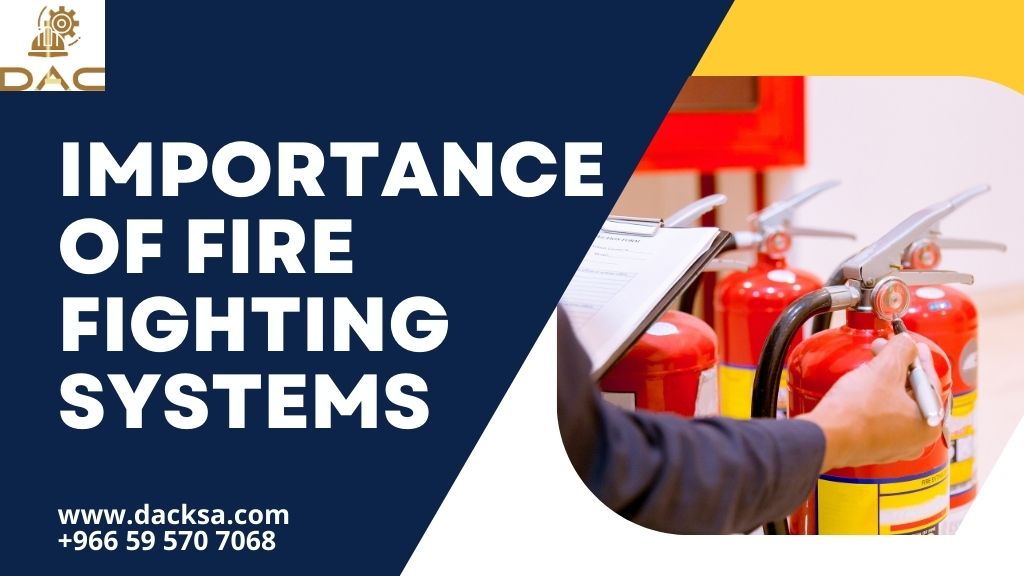Fire safety is a critical aspect of any building’s security measures, and having an effective fire fighting system in place is crucial to protect lives and property.
In this comprehensive guide, we will explore the different types of fire fighting systems available and provide detailed information on their features, benefits, and installation processes. Whether you own a residential or commercial property, understanding these systems and their components is essential for enhancing safety and minimizing potential damage caused by fires.
From Fire Alarm Installation, Fire Suppression Systems, Fire Safety Training, Maintenance and Inspection, and Fire Extinguisher Installation are the services offered by DAC company. Join us as we help you safeguard your property and ensure the safety of occupants. Together, let’s take proactive steps to prevent fire tragedies and create a secure environment.

Importance of Fire Fighting Systems
Fires can occur in any building, regardless of its size or purpose. The consequences of a fire can be devastating, resulting in loss of life, property damage, and financial ruin. Investing in a reliable fire fighting system is a proactive measure to prevent such tragedies and ensure the safety of occupants.
Fire fighting systems play a crucial role in the early detection, containment, and suppression of fires. They are designed to provide immediate response and minimize the spread of fire, allowing occupants to evacuate safely and firefighters to control the situation more effectively.
Having a well-designed and properly maintained fire fighting system not only complies with fire safety regulations and codes but also gives you peace of mind knowing that your property is protected. By investing in these systems, you demonstrate a commitment to the safety and well-being of your occupants, employees, and visitors.
Installing a fire fighting system is a proactive step towards preventing fire-related disasters. It is an essential component of a comprehensive fire safety plan and should be tailored to the specific needs and layout of your property. Let’s explore the different types of fire fighting systems to help you make an informed decision.
Contact DAC today for a free fire safety consultation and quote. We’ll help you create a comprehensive fire protection plan for your property. Visit our website www.dacksa.com or call us at +966 59 570 7068
